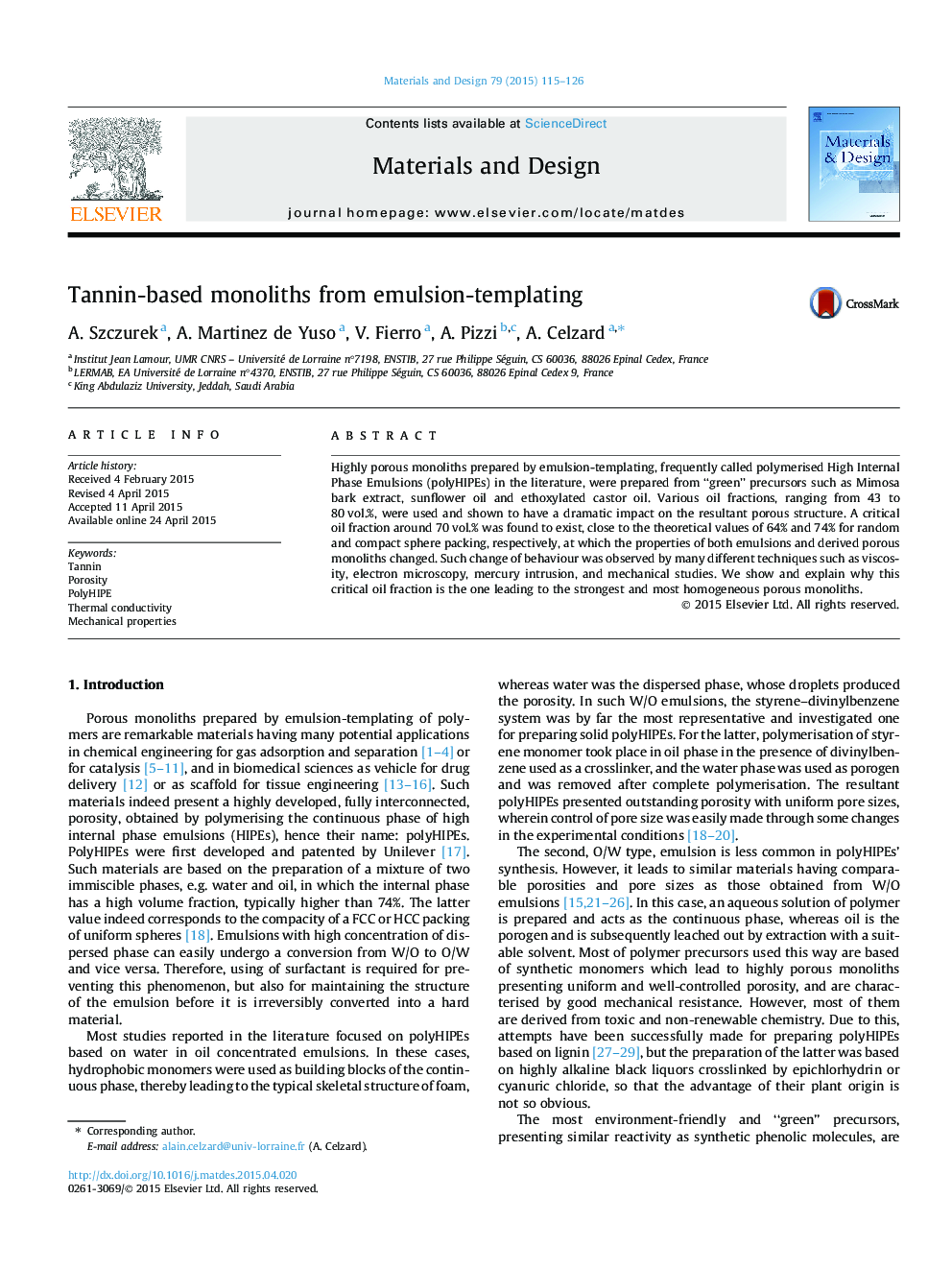| Article ID | Journal | Published Year | Pages | File Type |
|---|---|---|---|---|
| 828558 | Materials & Design (1980-2015) | 2015 | 12 Pages |
•Efficient preparation procedures are presented for new and “green” tannin-based organic polyHIPEs.•Highest homogeneity and strength are obtained at an oil fraction near the close-packing value.•Structural and mechanical properties abruptly change above such critical value.
Highly porous monoliths prepared by emulsion-templating, frequently called polymerised High Internal Phase Emulsions (polyHIPEs) in the literature, were prepared from “green” precursors such as Mimosa bark extract, sunflower oil and ethoxylated castor oil. Various oil fractions, ranging from 43 to 80 vol.%, were used and shown to have a dramatic impact on the resultant porous structure. A critical oil fraction around 70 vol.% was found to exist, close to the theoretical values of 64% and 74% for random and compact sphere packing, respectively, at which the properties of both emulsions and derived porous monoliths changed. Such change of behaviour was observed by many different techniques such as viscosity, electron microscopy, mercury intrusion, and mechanical studies. We show and explain why this critical oil fraction is the one leading to the strongest and most homogeneous porous monoliths.
Graphical abstractFigure optionsDownload full-size imageDownload as PowerPoint slide
